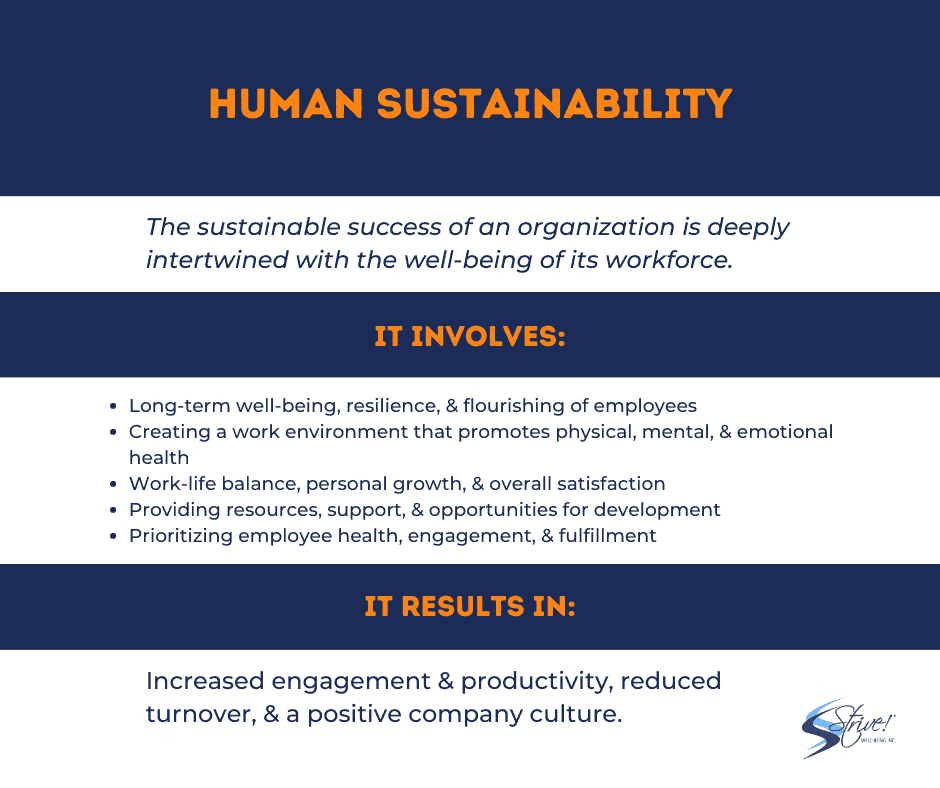How-To Promote Health in the Workplace
In today’s fast-paced and evolving work environments, employees often face sedentary office routines or demanding physical labor without proper sustenance. It’s more important than ever for employers to be proactive about the health of their population. Investing in employee health and well-being is the right thing to do, but it’s also a smart business strategy that requires the organization to understand employee needs, behaviors, and motivations.
Focusing on employee health demonstrates genuine care for the workforce while also yielding positive outcomes such as higher retention rates, increased productivity, and reduced healthcare costs. The question then arises: How can employers effectively promote health in the workplace? This article delves into practical strategies that empower employees to prioritize their health even amid demanding deadlines and time constraints. Organizations can create a workplace culture that not only values its employees’ well-being but also sets the stage for long-term success.
Promoting Health in the Workplace
In this post:
1. Benefits of Health & Wellness in the Workplace
2. Physical Health & Well-Being
2. Supporting Human Sustainability
Benefits of Health & Wellness in the Workplace
The benefits of health and wellness in the workplace extend to employers and employees alike. In fact, employee change precedes organizational change. Experiencing change, big or small, is a complex process and employees will undoubtedly require time and support to embrace it.
It’s up to leadership to successfully guide their organization through the introduction, implementation, and ongoing efforts of health and wellness in the workplace with empathy, dialogue, and problem-solving.
Employees
Employees that have access to nutritious foods and are encouraged to take on-the-clock time to walk, stretch, rest/meditate, or exercise experience:
- Stress relief — reduced blood pressure & stress hormones, increased mood-boosting endorphins
- Motivation & productivity — better sleep, more energy, improved focus, positive outlook
- Stronger immunity — reduced risk of chronic pain or disease and healthier lungs & airways
Employers
Health promotion strategies are incredibly valuable for employers. Supporting employee health and well-being results in:
- Higher levels of quality production
- Increased attendance
- Lower healthcare costs
- Higher job retention rates
- Higher morale
Physical Health & Well-Being
Employees spend so much of their time in their workspace, it’s imperative they find it to be comfortable and generally pleasant. Foster an environment conducive to health and wellness by monitoring air quality, lighting, and temperature. Utilize ergonomic furniture to prevent/reduce chronic pain and MSK issues, create a wellness space for employees to relieve stress or spend some time in solitude (i.e. meditation or yoga room), and stock vending machines, kitchens, or cafeterias with nutritious options. Accents like plants, water features, and natural lighting also facilitate a sense of calm in the body.
Encourage regular movement or exercise with group classes or step/stair challenges, and promote onsite fitness facilities, walking trails, or cycling to work initiatives to motivate employees to engage in physical activity. Ensure employees know they’re encouraged to take several micro-breaks throughout their day to give their body a break to stretch, walk, or even power nap.
Discover more about why fitness matters in the workplace.
Mental Health & Well-Being
Supporting mental health is crucial to having a thriving business. Leadership and employees alike should have easy access to seminars/webinars, stress relief classes, or other educational resources to help the population understand what mental health is, how to recognize a decline in themselves or others, and what resources are available. Mental health education equips employees with the knowledge and tools they need to foster a culture of understanding and empathy. Management should monitor overtime hours, enforce after-hours boundaries, and encourage employees to utilize PTO.
Organizations can demonstrate a commitment to their population’s mental health by offering benefits such as low out-of-pocket costs for timely counseling, therapy, medication coverage, or subsidized clinical screenings. For employees to feel safe seeking out mental health resources, it’s important to cultivate a culture that values mental health, focused on problem-solving strategies and eliminating stigma surrounding mental health issues.
Learn more about mental health solutions for the workplace.
Promoting Healthy Habits
Comprehensive wellness programs are a great way to motivate employees to think about their health and to provide consistent wellness opportunities they can participate in, such as fitness classes or challenges, nutrition workshops, and mindfulness training. Educating employees about healthy lifestyle choices, including the importance of regular exercise, balanced nutrition, and quality sleep, empowers them to make informed decisions about their health.
Some wellness initiatives include:
- Fitness programs — full body fitness, HIIT, core conditioning, Zumba, yoga, strength training, etc.
- Mindfulness programs — classes, workshops, coaching, & challenges
- Stress management programs — meditation, yoga, mindfulness-based stress reduction (MBSR)
- Nutrition programs — cooking demos, workshops, coaching, & education
- Educational health talks — finances, personal development, health
Providing support for smoking cessation and substance abuse, and encouraging regular health check-ups and screenings are also aspects to incorporate into employee wellness programs. By addressing whole-person well-being and offering consistent initiatives, wellness programs create a culture that supports the long-term health of employees.
Zippia research found that 56% of wellness program participants reported needing fewer sick days, 84% of employers reported higher productivity and performance, and absenteeism was reduced by 14-19%.
Supporting Human Sustainability
Promoting health in the workplace ultimately comes down to demonstrating care for employees. Work is a large determinant of well-being, and it can also be one of the largest sources of stress. Offering flexibility, encouraging use of PTO, and reinforcing the importance of stress management techniques helps employees avoid burnout and all the ailments that come with it (absenteeism, presenteeism, mood disorders, social withdrawal, health risks, etc.).
It’s also vital to employees overall health to feel engaged at work. Recognition programs, open communication, and involving employees in decision-making processes immerse them in the culture of the company. Loneliness has become a real health risk in the U.S., so team-building and collaboration have become crucial in helping employees feel connected in their work environment.

Promoting Health & Wellness for Remote Work
Organizations can even promote health in remote workforces, and it’s more important than ever. Beginning in the pandemic and still impacting workforces today, remote employees conveyed feeling isolated and lacking distinction between work and their personal life.
Wellness companies like Strive can accommodate fully remote wellness programs. Our account managers coordinate calendar invites, class reminders, and zoom links with our seamless registration platform, as well as monitor video and sound quality. Strive selects instructors with the proven ability to form connections in a virtual setting and that are available for questions or one-on-one time after class.
Select a wellness vendor like Strive with virtual options for fitness classes, cooking demos, or health talks. Strive offers remote wellness coordinators to accommodate remote workforces or wellness programs that only require part-time assistance.
Implement routinely scheduled manager check-in calls and provide a virtual space for employees to connect, collaborate, or share ideas.
Strive Promotes Health in the Workplace
Strive provides turnkey wellness services that are seamlessly incorporated into existing wellness programs, or we can help design and implement a new wellness program. We ease the administrative burden required for a successful program by handling items such as:- Employee needs & interest survey
- Vetting/hiring instructors
- Liability waivers
- Marketing materials
- Registration platform
- Monthly engagement data & reporting



